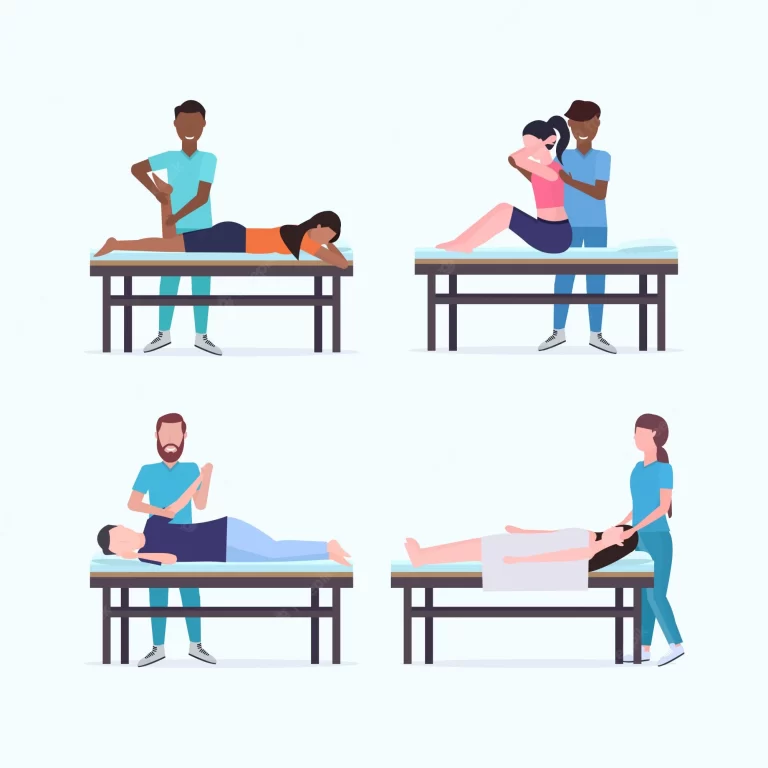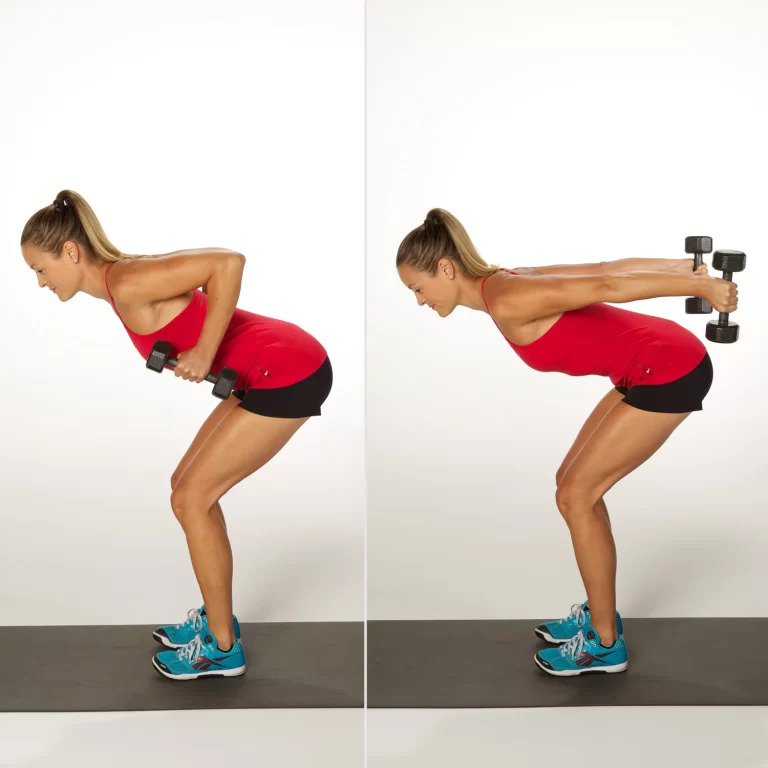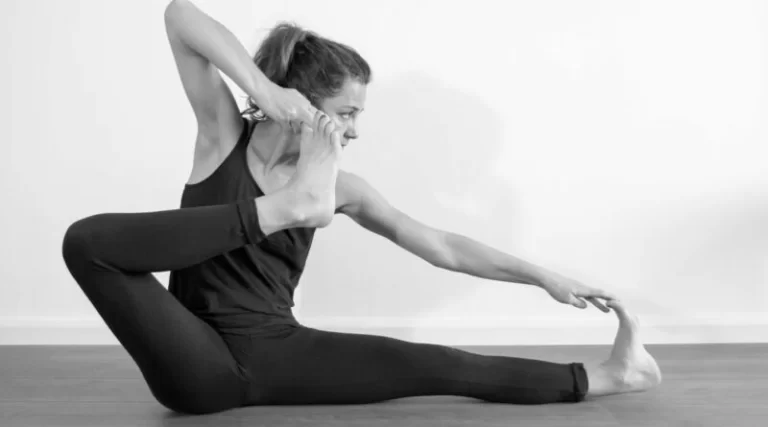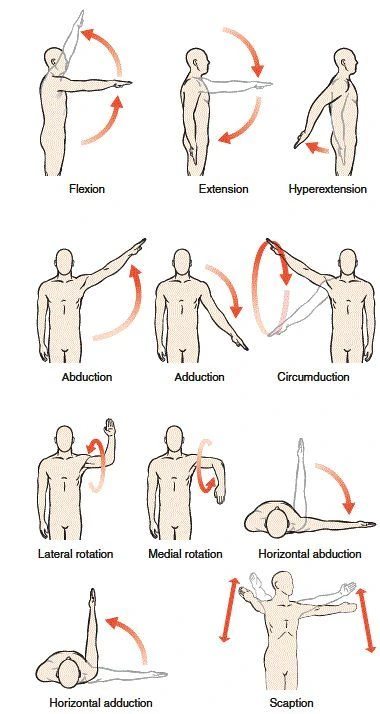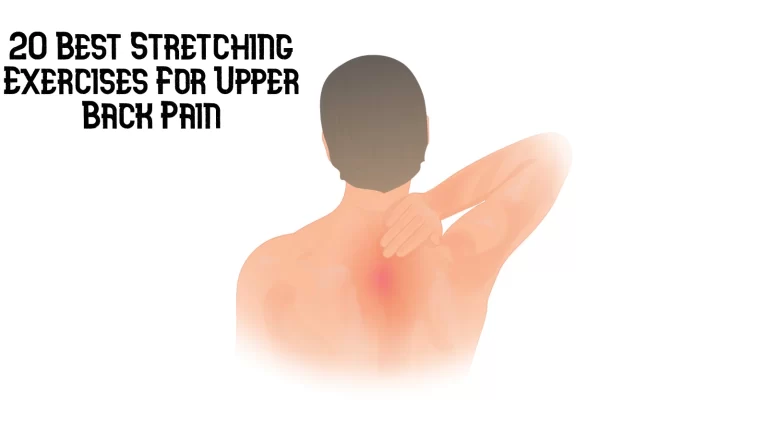Shoulder Exercise for Pain
Shoulder Exercise for Pain relief is the best way to make your shoulder work again to perform all day-to-day activity. Exercise helps to strengthen your shoulder and reduce the risk of re-injury.
What are Shoulder Exercises for pain?
This common joint issue can affect anyone. Shoulder pain may include the cartilage, ligaments, muscles, nerves, or tendons. It can also involve the shoulder blade, neck, arm, and hand. Early treatment is essential. It can take seven weeks or longer for shoulder pain to heal. At-home shoulder pain remedies may aid recovery.
What are the Health Benefits of Shoulder exercises?
There are certain health benefits of doing shoulder exercises:
- Reduces Shoulder pain and improves the function of the shoulder.
- Increases range of motion and function.
- Supports healthy cartilage.
- Assists with weight loss.
- Aids maintain function.
Some are Shoulder Exercises to Relieve Pain
These are the list of exercises:
- Arm circles
- Doorway stretch
- Thread the needle
- Eagle Pose
- Child’s Pose
- Lateral raises
- External shoulder rotation
- Internal shoulder rotation
- Reverse fly
- Downward Dog
- Across-the-chest stretch
- Neck release
- Chest expansion
- Eagle arms spinal rolls
- Seated twist
- Shoulder circles
- Shoulder rolls
- Cross-body arm swings
- Rag doll Pose
- Cow Face pose
- Side-lying thoracic rotation
- Assisted Lateral Rotation
- Assisted Abduction
- Assisted Medial Rotation
- Assisted Flexion
- Lateral Rotation
- Scapular Setting
- L-Stretch
- Shoulder Flexion and Upper Thoracic Extension
- Bent Arm Scaption Plane Stretch
- Bent Arm Thoracic Extension
- Prone Scapular Series
- Prone Shoulder Circumduction
- Scapular Weight-bearing
- Motor Control Play Overhead
- Motor Control Play on Parallettes
- Pendulum stretch
Arm circles

Arm circles are a productive method of warming up the shoulder joints and improving flexibility. Performing arm circles may help relieve shoulder tension and pain.
Stand upright with feet hip-width apart.
Lift the arms and extend them to the side, creating a T shape with the body.
Make small circular movements with the arms.
Repeat this exercise for 12–15 seconds, then switch the direction of rotation.
Doorway stretch
The doorway stretch is a static stretch that can aid improve the flexibility of the shoulders, specifically the pectoralis muscles. A person can perform this in a doorway or the corner of a room.
Standing up, face a corner of the room close enough to touch each wall.
Bend the shoulders and elbows to 90 degrees so that the fingers point to the roof.
Put one hand on each wall, with the elbows at shoulder height.
Tilt into the corner. This should stretch the chest.
Hold your stretch for 40–60 seconds.
Repeat this four to six times.
Thread the needle
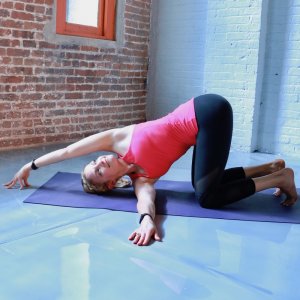
This motion may help relieve mobility restrictions in the shoulders and upper back.
Begin on the hands and knees.
Put the right palm in the center of the mat, directly under the chest.
Raise the left arm toward the ceiling, with the palm facing away from the body.
Lower the left arm, gliding it under the right arm. Keep the left arm extended and avoid collapsing the chest.
Deepen this stretch by raising the right arm off the ground.
Hold this pose for 30 seconds.
Eagle Pose
The Eagle Pose, also called Garudasana, is a yoga position that stretches the shoulder muscle. A person looking to stretch their shoulders can choose to do the upper body part of the pose only.
While standing or sitting, straighten the arms to the sides.
Cross the arms in front of the body, with the left arm over the right.
Flex both the arms at the elbows.
Twist the left forearm behind the right forearm and bring the palms together.
Gently lift the arms upward to stretch the shoulders.
Hold this pose for 30 seconds.
Lower the arms and gently release the pose.
Child’s Pose

The Child’s Pose, or Balasana, is a gentle, relaxing yoga position that stretches the shoulders and back.
Kneel on the ground, or a yoga mat, with the knees slightly wider than hip-width apart.
Go on all fours, positioning the palms on the mat slightly in front of the shoulders.
Sit back on the heels and pivot forward at the hips, resting the stomach on the thighs.
Extend the arms in front of the body and rest the forehead on the ground.
Deepen the stretch by pressing the chest and shoulders toward the floor.
Hold this pose for 30 seconds.
Lateral raises
The lateral raise is a shoulder strengthening exercise. People can use lightweight dumbbells, water bottles, or resistance bands for this exercise.
Grabbing a pair of light dumbbells (under 5 pounds), stand with the feet slightly wider than hip-width apart.
Lift the weights to the sides until they are at shoulder level.
You need to engage the core muscles.
Slowly put the weights down to the sides.
Do this exercise for two sets, with each set consisting of 10–15 reps, three to four times per week.
External shoulder rotation
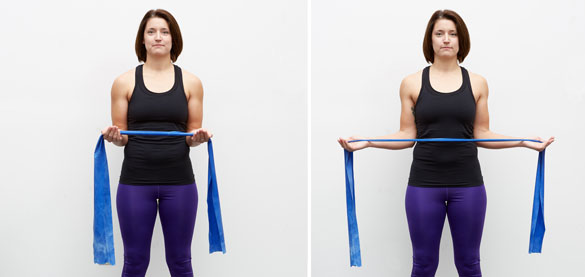
External shoulder rotation is another best exercise for strengthening the rotator cuff muscles and improving flexibility. People can utilize a resistance band or towel for this exercise.
Grasp the light resistance band in both hands.
Keep both arms at the sides of the body and flex them at the elbow.
Keeping one arm still, rotate the other away from the body while keeping the 90-degree bend in the elbow.
Hold this pose for 5 seconds.
Gently return the arm toward the body.
Do this exercise for two sets, with each set consisting of 10–15 reps, three to four times per week.
Internal shoulder rotation

Similar to the previous exercise, internal shoulder rotation can aid strengthen the shoulder muscles.
Tie up a resistance band or large elastic band to a doorknob.
Grasp the other end of the band in one hand.
Flex the arm at the elbow and pull the forearm toward the body.
Hold this pose for 5 seconds.
Slowly return to the beginning position.
Do this exercise for two sets, with each set consisting of 12–15 reps, three to four times per week.
Reverse fly
The reverse fly exercise functions the posterior deltoids, which are the muscles on the backs of the shoulders. People will require a pair of dumbbells, resistance bands, or water bottles.
Stand with the feet hip-width apart.
Pivot forward at the hips and let the arms hang straight down.
With the palms facing inward, lift both arms out to the sides and squeeze the scapulae together.
Slowly lower the arms and return to the beginning position.
Repeat this exercise for two sets, with each set including 12–15 reps, three to four times per week.
Downward Dog
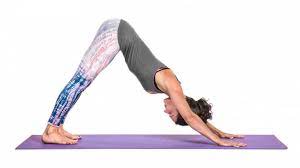
Downward Dog, or Adho Mukha Svanasana, is an inversion yoga position that may help strengthen the shoulders and back muscles. It can also enhance the mobility of the shoulders and thoracic spine (upper back) if a person performs it correctly.
Begin in a tabletop position, with the hands and knees on the ground or a mat. The knees should be directly below the waist, and the hands should be below the shoulders.
Press into the hands and raise the hips toward the ceiling. Straighten the legs and lower the heels as close to the ground as possible.
Hold this position for 30 seconds.
Across-the-chest stretch

This exercise aids increase flexibility and range of motion in your shoulder joint and the surrounding muscles. When performing this exercise, lower your arm if you feel any pain in your shoulder.
Bring your left arm across your chest.
Place it in the crease of your right elbow or use your right hand to support your arm.
Hold this pose for up to 1 minute.
Repeat on the other side.
Perform each side 3–5 times.
To deepen the stretch, raise your arm to shoulder height.
Neck release
This exercise is a tender way to loosen tension in your neck and shoulders.
Lower your chin toward your chest. You’ll feel a stretch along the back of your neck.
Gently tilt your head to the right to stretch your left shoulder.
Hold this pose for up to 1 minute.
Repeat on the other side.
Perform each side 3–5 times.
To deepen this stretch:
Place 1 hand on your shoulder and 1 hand above your ear to gently guide the motion.
Lower your chin toward the chest. You’ll experience a stretch along the back of your neck.
Gently tilt your head to the right to stretch your left shoulder.
Hold this pose for up to 1 minute.
Repeat on the other side.
Perform each side 3–5 times.
Chest expansion

This exercise encourages flexibility and range of motion in your shoulders.
While standing, grab an exercise band, strap, or towel behind your back with both hands.
Broaden across your chest as your move your scapulae toward each other.
Raise your chin and look up toward the ceiling.
Hold for up to 15-30 seconds.
Do it 3–5 times.
To deepen the stretch, put your hands closer together along with the towel or strap.
Eagle arms spinal rolls

This exercise stretches the shoulder muscles. If the arm position is uncomfortable, perform this exercise by holding opposite shoulders.
While seated, straighten your arms out to the sides.
Cross your elbows in front of your body with your left arm on top.
Flex your elbows, placing the backs of your forearms and hands together.
Reach your left hand around to bring your palms together.
Hold this pose for 15 seconds.
On an exhale, roll your spine as you move your elbows in toward your chest.
On an inhale, open your chest and raise your arms.
Continue this motion for 1 minute.
Repeat on the other side.
Seated twist
This exercise stretches the shoulders and neck. Keep the hips facing forward during this exercise. Allow the twist to begin in your lower back.
Sit in a chair with the ankles directly under your knees.
Twist your upper body to the left, bringing the back of your right hand to your thigh.
Place your left hand down wherever it’s comfortable.
Hold this pose for up to 30 seconds.
Repeat on the right side.
Perform each side 3–5 times.
Shoulder circles
This exercise is best for warming up your shoulder joints and increasing flexibility.
Stand with your right hand on the back of a chair.
Allow your left hand to hang down.
Circle your left hand 5 times in each direction.
Repeat on the other side.
Perform this 2–3 times per day.
Shoulder rolls

Shoulder rolls are a simple way to stretch the shoulders. To perform shoulder rolls:
Stand with the feet hip-width apart.
Permit the arms to hang down at the sides of your body.
Breathe in and raise the shoulders toward the ears.
Move the shoulders back, squeezing the scapulae together.
Exhale and release the shoulders back.
Move the elbows forward, feeling the stretch at the back of your shoulders.
Repeat this 10 times.
Cross-body arm swings

Arm swings aid warm up the shoulder joint and increase movement. To perform cross-body arm swings:
Stand with the feet hip-width apart.
Inhale and raise the arms out to the sides, squeezing the scapulae together.
Exhale and gently move the arms in toward each other.
Cross the left arm below the right, keeping both arms extended.
Inhale and swing your arms back out to the sides, squeezing the scapulae together.
Exhale, and slowly swing the arms in toward each other again.
This time, cross the right arm under the left, keeping both arms straight.
Do this 10 times.
Rag doll Pose
Ragdoll Pose is a forward bend yoga pose that may aid the release of tension in the shoulders. To do Ragdoll Pose:
Stand with the feet hip-width apart.
Flex the knees slightly.
Flex forward and try to touch the toes.
Keep the stomach against the flex knees to support the lower back.
Put each hand on the elbow of the other arm.
The crown of the head should point toward the ground.
Allow the head to hang heavily, releasing tension in the neck and shoulders.
Stay in the position for 1 minute or longer.
Cow Face pose
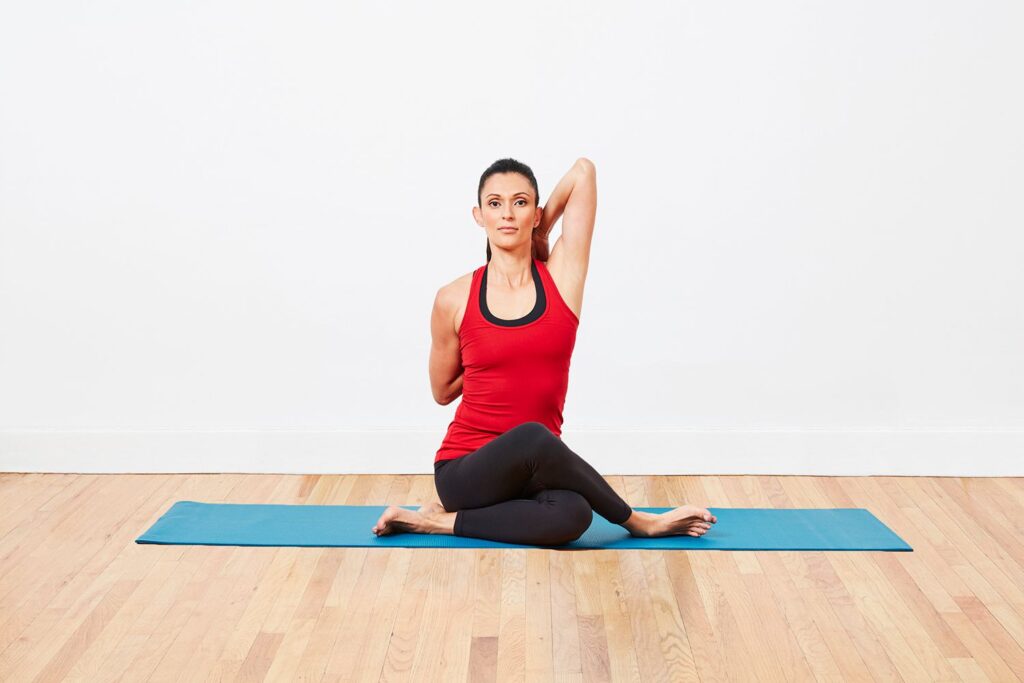
The Cow Face position is another yoga stretch for the shoulders. To perform the Cow Face pose:
Stand with the feet hip-width apart.
Reach the left arm up straight toward the sky.
Bend the left arm at the elbow.
Keeping the elbow lifted, reach the left hand over the head and down the back.
Stretch the right arm down toward the ground.
Reach the right hand behind and up the back.
Bring the right and left hands close together, clasping them if it feels comfortable.
Take three or four deep breaths.
Let go of the stretch and repeat it on the opposite side.
Side-lying thoracic rotation
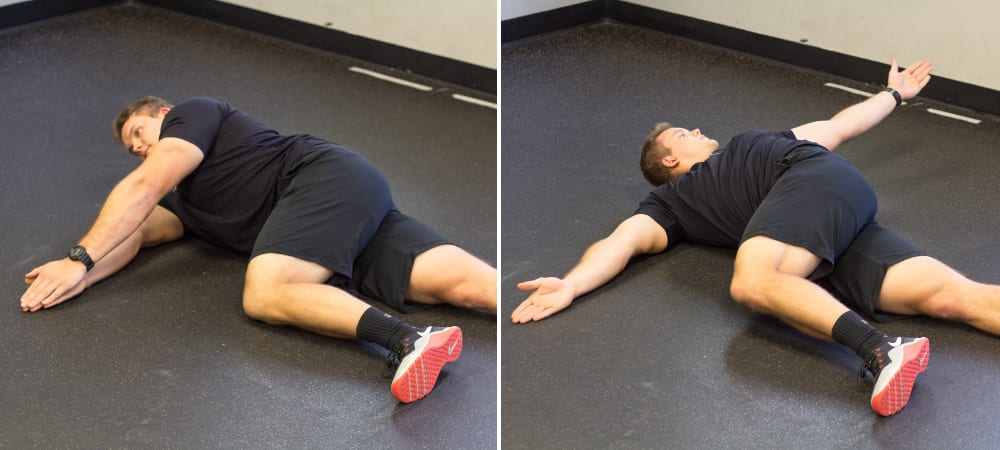
The side-lying thoracic rotation may sound complicated, but it is easy to perform. This shoulder stretch aids improve mobility in the thoracic spine, lumbar spine, and shoulders.
To perform a side-lying thoracic rotation:
Lay on your left side on the ground or on a mat.
Flex the knees slightly.
Stretch the left arm straight ahead.
Position the right hand on top of the left.
Keep your gaze fixed on the right hand.
Reach the right hand straight up.
Rotate the right arm toward the ground behind the back, as if drawing an arch in the air.
Keep the knees and hips pointing to the left throughout.
Bring the right arm back over to meet the left hand.
Repeat the drawing movement several times.
Then, practice it on the opposite side.
Assisted Lateral Rotation

To perform this exercise lie on your back.
Have your elbows flex to 90 degrees and tuck your elbows in at the side of your body.
Grab a walking stick or a broom in both hands and utilize it to push the painful arm out to the side keeping your elbow tucked in at the side.
To begin with, do 1 set of 15 repetitions 3 times per day and as you become fitter and stronger perform 3 sets of 15 repetitions 3 times per day.
Assisted Abduction
In standing have both arms extended and by your side holding onto a stick (a broom or mop handle will do).
Utilize your arm that is not painful to push your painful arm out to the side.
Keep your arm extended at all times and your shoulder relaxed.
To begin with, do 1 set of 15 repetitions 3 times per day and as you become fitter and stronger perform 3 sets of 15 repetitions 3 times per day.
Assisted Medial Rotation
In standing put your painful arm behind your back.
Cover a rolled-up towel over the shoulder that is not sore.
Grab the towel in both hands.
Utilize the arm that is not sore to pull the sore arm up your back.
Grab the stretch for 20 seconds and repeat 5 times.
Assisted Flexion

To perform this exercise lie on your back holding onto a walking stick in both hands.
Keep both arms straight raise both arms to the ceiling and move back towards the head or as far as pain allows.
To begin with, do 1 set of 15 repetitions 3 times per day and as you become fitter and stronger perform 3 sets of 15 repetitions 3 times per day.
Lateral Rotation
To perform this exercise lie on your back.
Place both hands behind your head.
Try and keep the shoulders relaxed.
Gently draw your arms apart and lower them towards the bed.
Initially pause for 5 seconds but slowly rise time when you feel able to do so.
Then slowly return to the beginning position keeping your hands behind your head.
To begin with, do 1 set of 15 repetitions and as you become fitter and stronger do 3 sets of 15 repetitions.
Scapular Setting
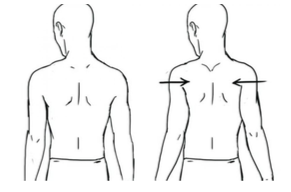
You can perform this exercise in either sitting or standing.
Have your arms by the side with your palms facing forwards.
Pull your shoulders back and squeeze your scapulae together.
Try not to lift your shoulder during this motion.
In the starting, hold for 5 seconds, but rise time gradually when you feel able to do so, then slowly release.
To begin with, do 1 set of 15 repetitions and as you become fitter and stronger perform 3 sets of 15 repetitions.
L-Stretch
L-stretch for shoulder pain relief.
take a kneeling position in front of a bench or other elevated surface, pull one arm across your chest and lean forward so that your chest is resting on the arm.
Extend the other arm in front of you.
Lean towards the shoulder of the arm that’s pulled across the chest.
The motion may be very slight, or you may have more motion–it just depends on where your mobility is at.
You should experience a stretch at the back of the shoulder capsule.
Move-in and out of the stretch 10 times, then pause for 15-30 seconds.
Repeat on the other side.
Shoulder Flexion and Upper Thoracic Extension

Shoulder flexion to help shoulder mobility.
Straighten your arms straight on a bench or elevated surface. You can drop into more of a kneeling pose.
Press into the bench as you bring your chest down towards the floor and forward towards the bench, in one sweeping movement.
Concentrate on rolling the shoulders outward as you move in and out of the stretch.
This movement puts the shoulders into a flexed position while straightening the thoracic spine, which tends to get very tight on many people.
Move-in and out of the stretch 10 times, then pause for 15-30 seconds.
You can also draw from side to side while you are in the stretched position.
Once you perform both arms, you can work on one arm at a time.
Bent Arm Scaption Plane Stretch
Kneel next to an elevated surface, and put one palm down on the surface, with your elbow pointed up.
Roll the shoulder capsule in and out, as Rose demonstrates.
You should feel the best stretch in your pec at the stretched pose.
Move in and out of the stretch 10 times, then stay there for 15-30 seconds.
Repeat on the other side.
Bent Arm Thoracic Extension
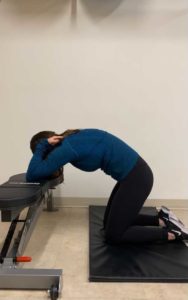
Upper back stretch for shoulder pain relief.
For this stretch, you will have your arms flex, with the elbows resting on the bench in front of you.
The movement will be the same as the previous stretch, but this time, you will press the elbows into the bench to promote a deeper stretch in the thoracic spine.
Move-in and out of the stretch 10 times, then pause for 15-30 seconds.
Prone Scapular Series
Shoulder exercise for shoulder stabilization.
Take a prone position on an elevated surface (a bench or even a bed works), with one arm hanging off of the surface.
Depress the shoulder of the hanging arm, then roll the arm backwards, and hold it in the stretched pose for a few seconds, then bring it back to resting. Do it 10 times.
Then, bring the arm forward, and roll the shoulder outward as you do so. Hold it in the forward pose for a few seconds, then bring it back to resting. Do it 10 times.
Repeat both movements on the opposite shoulder.
Prone Shoulder Circumduction

Shoulder circles for shoulder pain relief.
Take a prone position.
Bring the arm forward, then straight it outward, then behind you, then bring it forward to rest, forming a half-circle.
Go in one direction 5-10 times, then reverse directions.
Be sure to repeat on the opposite side.
Scapular Weight-bearing
Here, you will add some weight-bearing to your shoulders, by lifting your hands on parallettes or dumbbells (whatever you have around), while in a plank pose.
Keep the elbows extended as you create circles with your shoulders.
Perform 5-10 circles in one direction, then go in the opposite direction.
Motor Control Play Overhead
For this exercise, you’ll want to place your hands on the floor, with your feet on an elevated surface.
As much as possible, try to press into the floor to open up the shoulders.
If having your feet lifted is uncomfortable, you can perform these exercises from a standard downward dog position.
There is no set pattern of motions–just see how different movements and angles feel for you.
Motor Control Play on Parallettes
Here, you will utilize dumbbells or parallettes to support your hands.
Press down into those supports, while maintaining the chest up and the elbows straight.
Following the same idea as the previous exercise, the idea here is to play around with drawing your shoulders in different directions while supported in this way. Try shrugging your shoulders, performing circles, moving from side to side–whatever feels good to you.
Pendulum stretch

The pendulum is a gentle way to increase motion in the shoulder using the force of gravity. To perform this stretch:
Stand with the feet hip-width apart.
Lean forward and look at the floor.
Put the right hand on a table or chair for support.
Allow the left arm to hang down.
Swing the left arm slowly in small circular motions, letting gravity do most of the work.
Do it for 30 seconds to 1 minute.
Change the direction of the movement.
Repeat this, using the opposite arm.
Things to Remember during Shoulder Exercises
Daily exercises and stretches can keep your shoulder strong and flexible. A few things to remember before jumping into exercises:
- Stop any exercise if you have more shoulder aches. It may be too soon for you to practice.
- Watch your form. Exercising incorrectly can also cause or worsen shoulder pain issues. Exercise must be pain-free.
- Warm-up, even before deep stretching. Light shoulder rolls, gentle motions, or even a warm shower are all ways to warm up the muscles before exercise and stretching.


